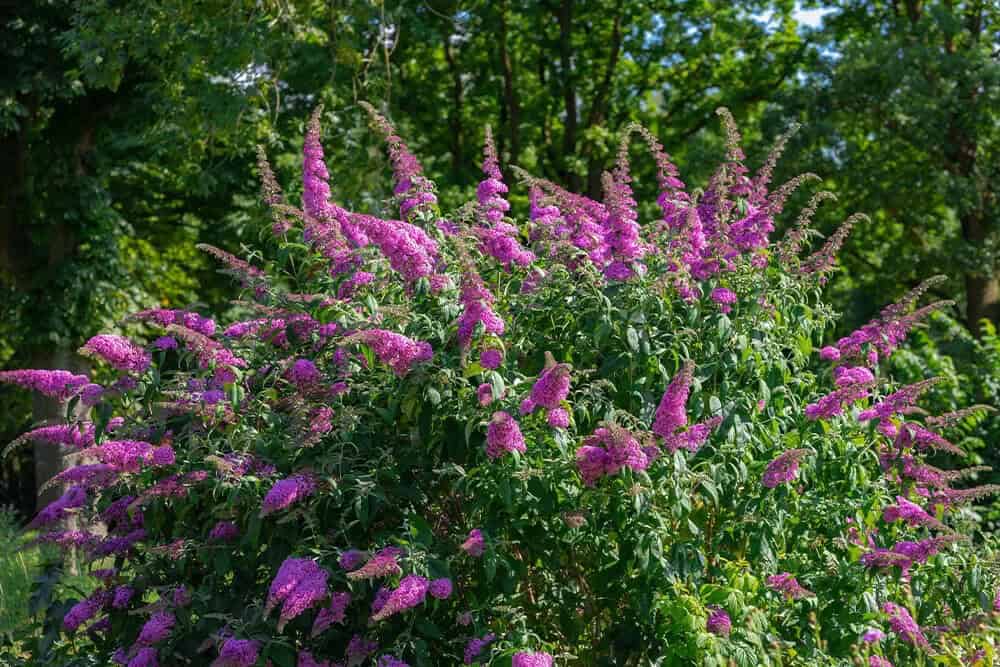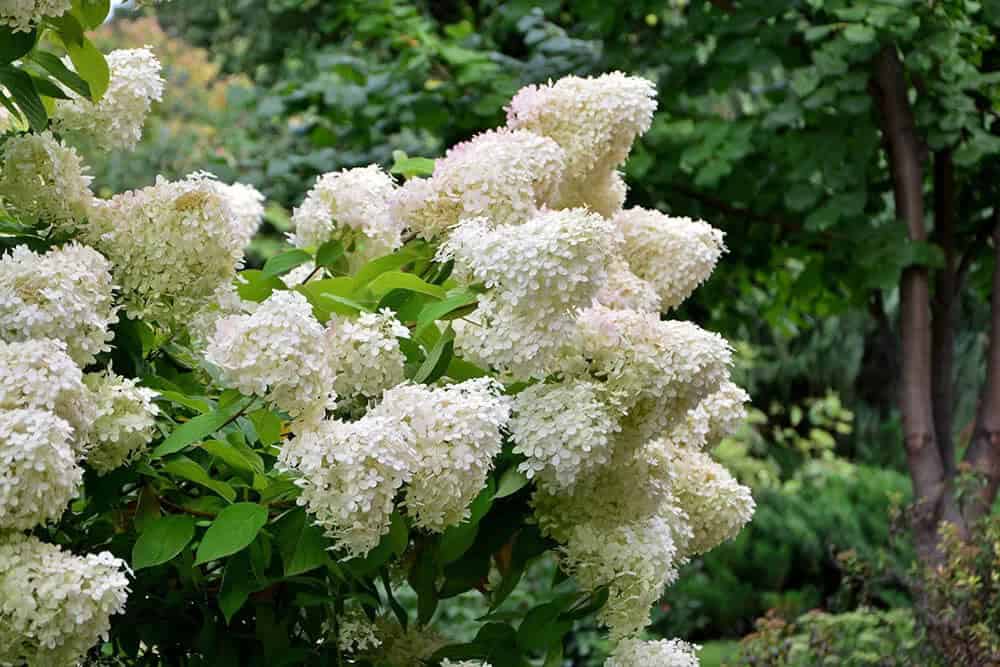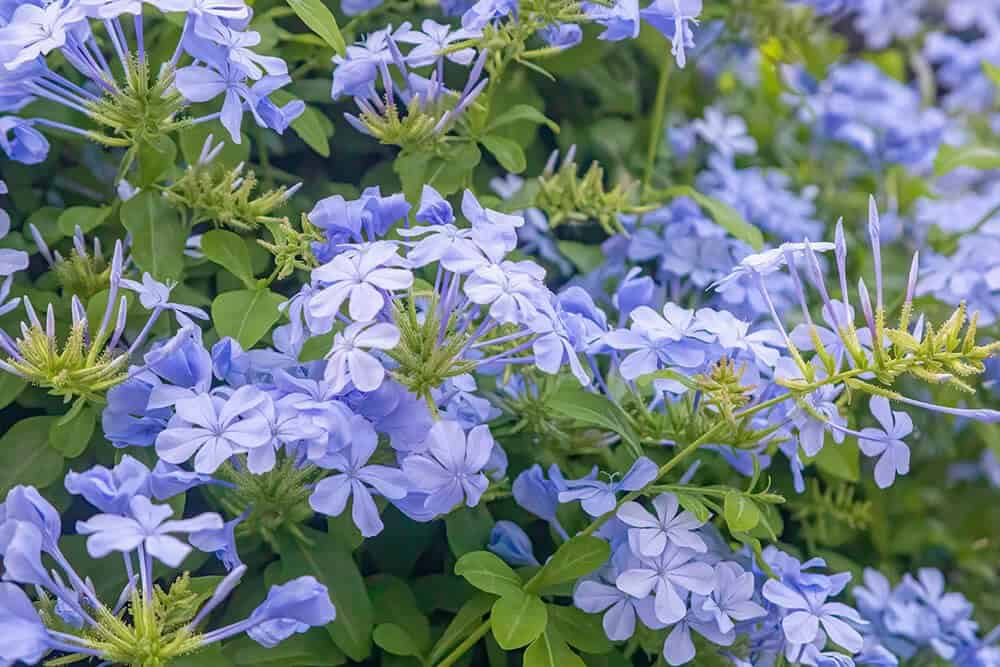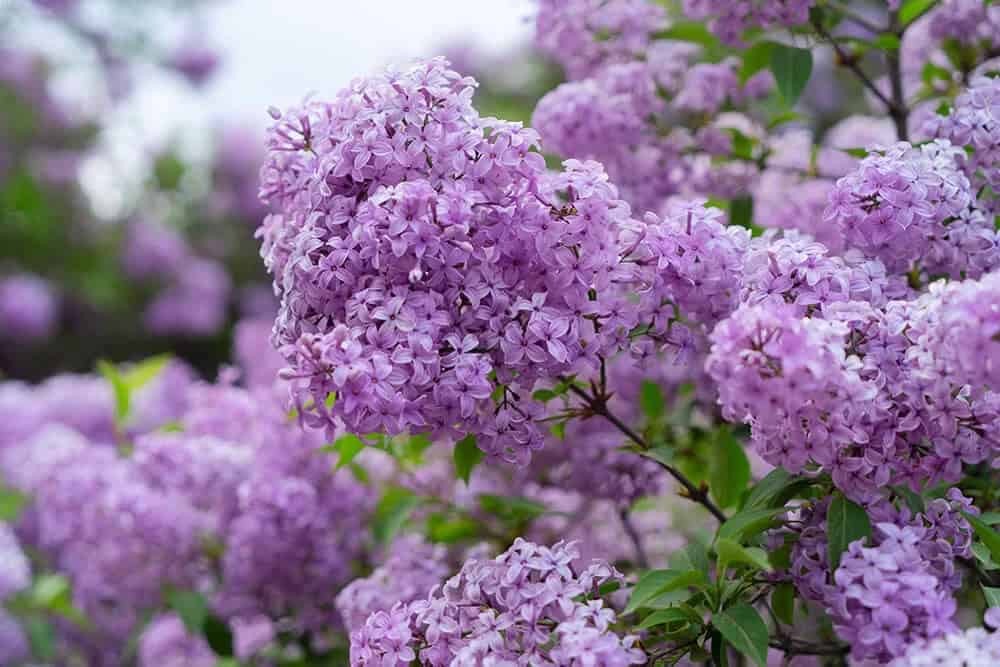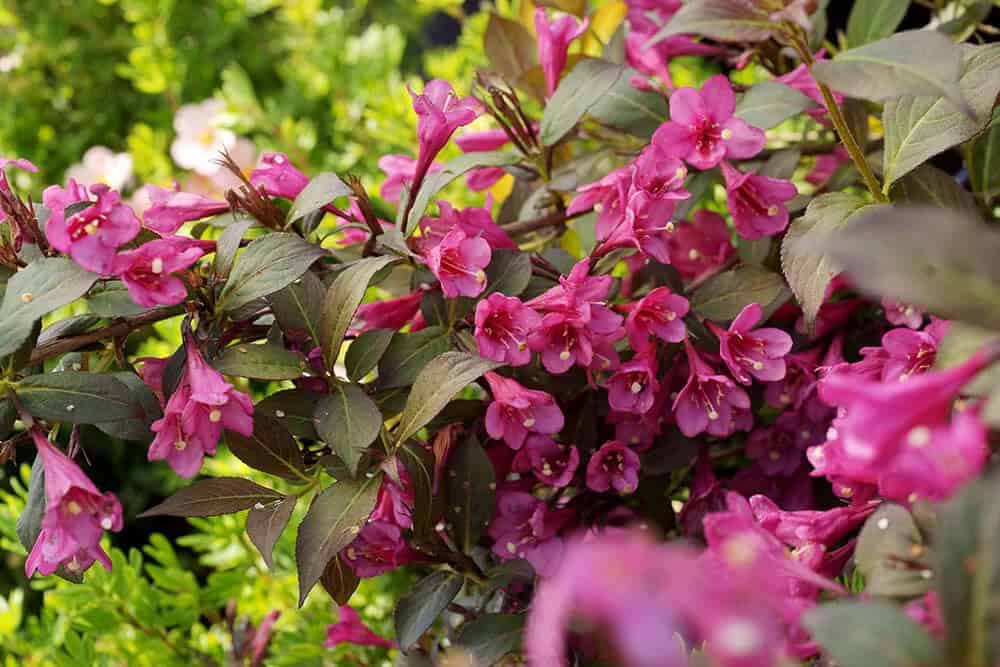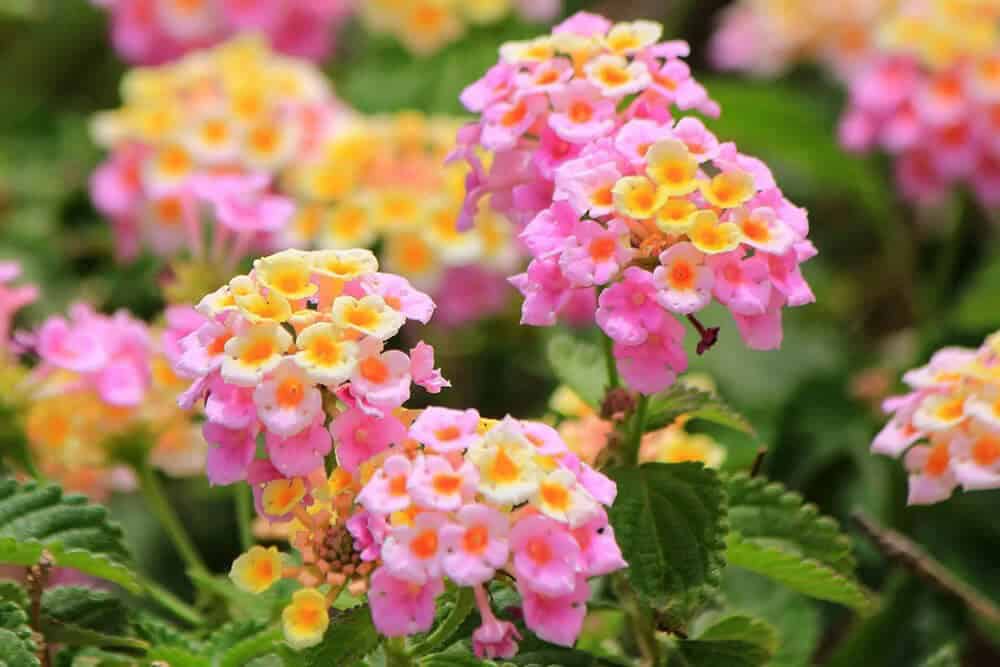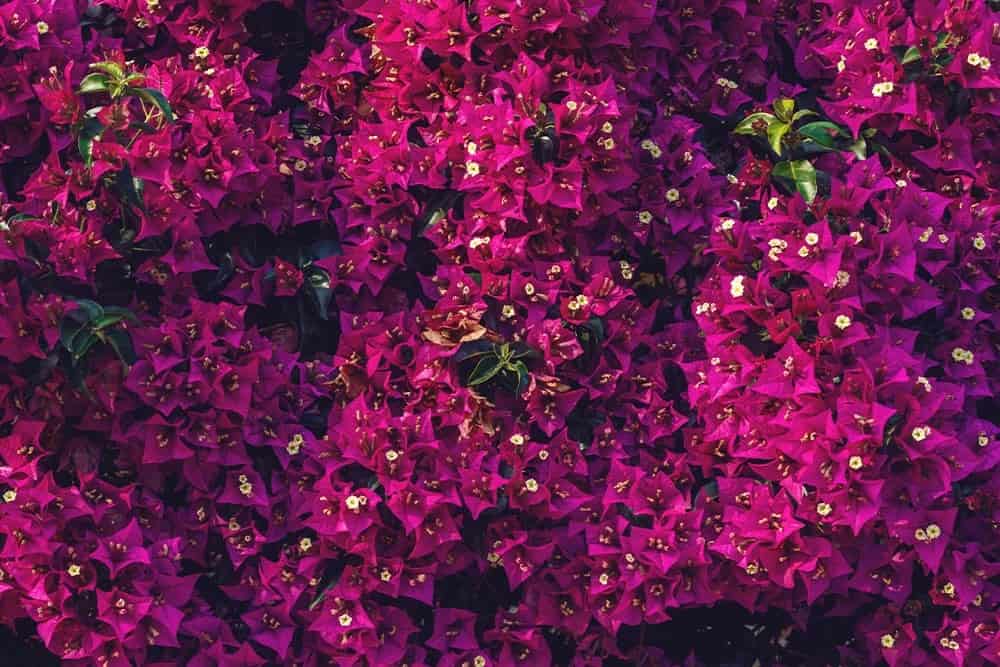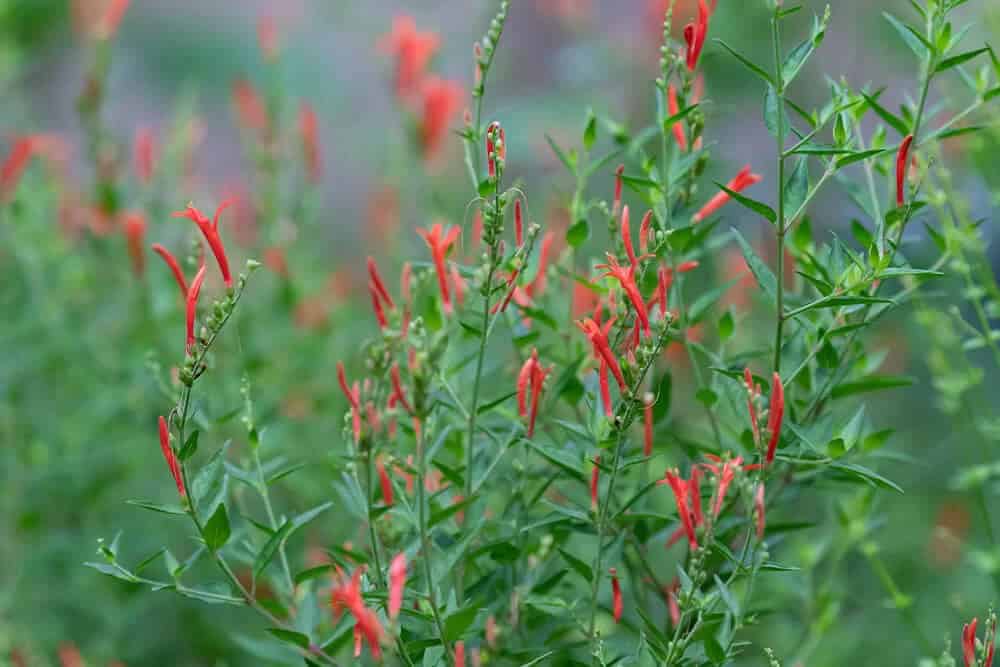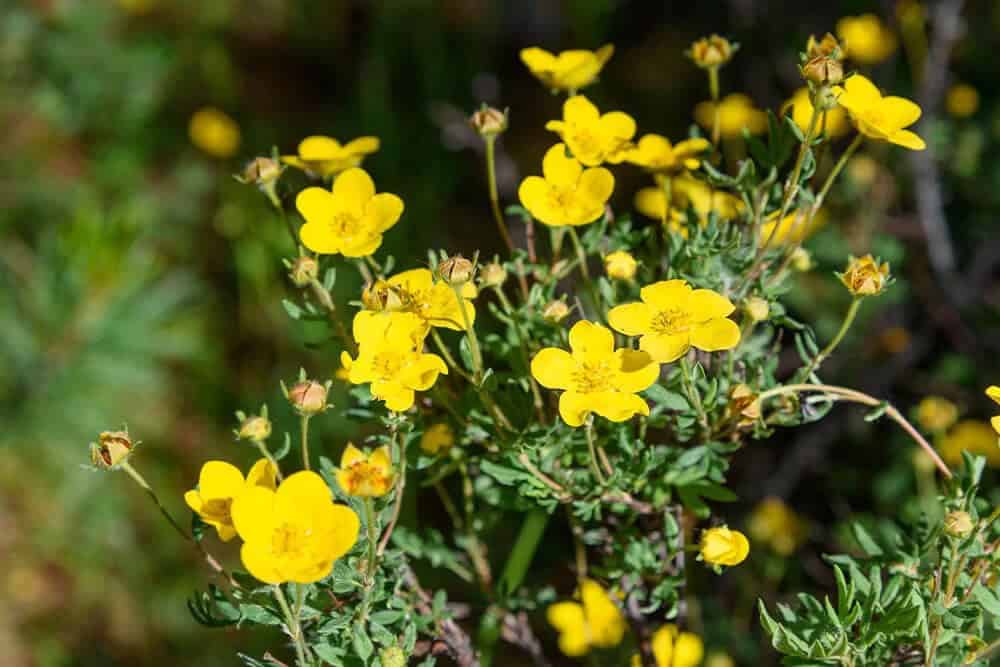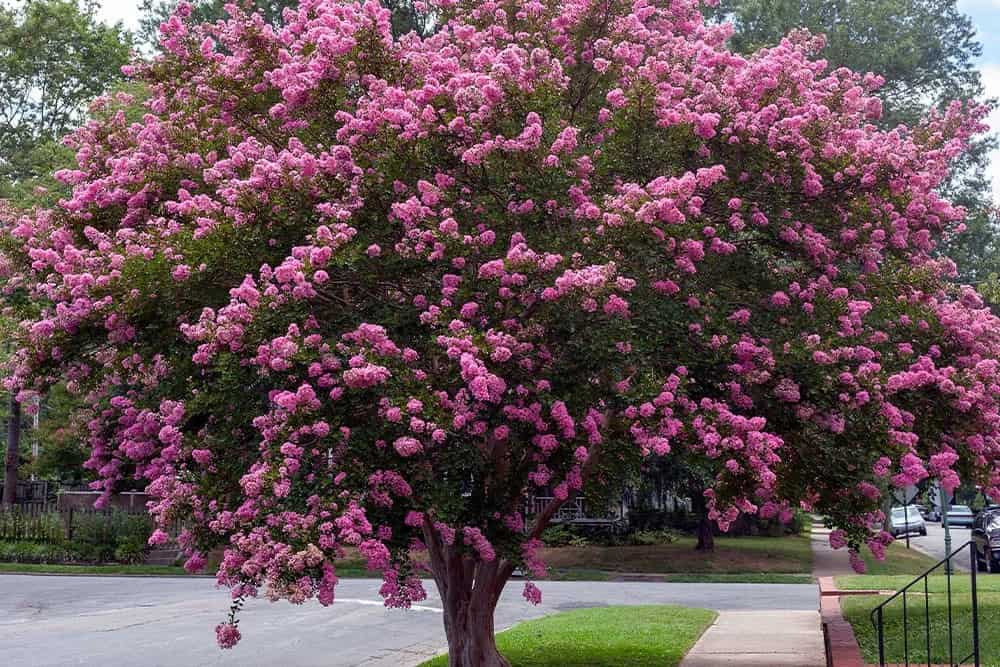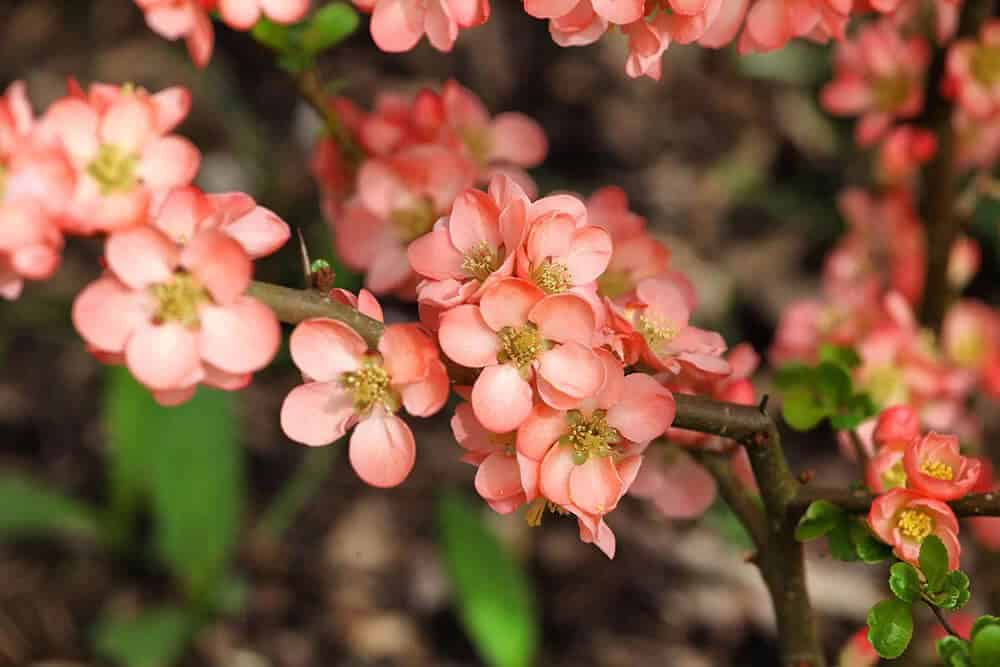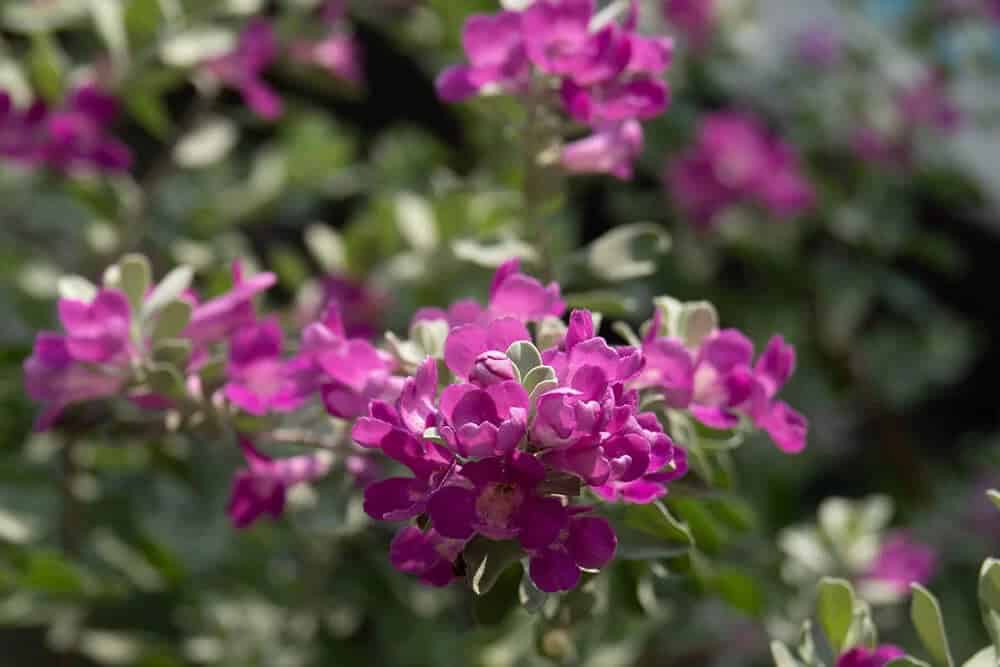Flowering shrubs are a fantastic way to add depth, texture, and vibrancy to your garden. Whether you’re looking for a statement piece or a subtle accent, the right flowering shrub can make all the difference. With so many varieties to choose from, it’s easy to get caught up in the excitement of exploring different options. From classic roses and lilacs to more unusual choices like azaleas and tropical beauties, there’s truly something for everyone.
One of the best things about flowering shrubs is their ability to add structure and interest to your garden through a combination of blooms, sizes, shapes, foliage, and texture. And with full sun being an option, you have even more possibilities at your fingertips. Whether you’re looking for something compact or sprawling, there’s no shortage of options to consider.
Key Takeaways
When selecting flowering shrubs, it’s crucial to consider their sun requirements, water needs, blooming patterns, and pruning habits. While many shrubs thrive in full sun, some prefer partial shade or even high noon with some afternoon shade. The amount of energy they need to produce blooms varies greatly, too – some can tolerate scorching heat while others wilt under the same conditions. This adaptability is crucial in areas with harsh winters or sweltering summers.
In terms of water usage, flowering shrubs are often more finicky than annuals and perennials. Native species might be drought-tolerant, but they can still succumb to root rot if overwatered. On the other hand, some shrubs require consistent moisture, so it’s essential to understand their specific needs. Bloom times also play a significant role in choosing the right shrub.
While many flowering plants produce blooms in spring or summer, there are exceptions like the early-blooming flowering quince and forsythia. Understanding these patterns can help you plan your garden accordingly. Pruning is another vital consideration when selecting flowering shrubs. Some species are finicky about pruning, requiring precise cuts to encourage blooming. Others can handle heavy pruning, which can be beneficial in colder climates where frost protection is necessary.
Finally, it’s essential to consider the origin of the shrub. Native plants tend to be more low-maintenance and better suited for local conditions, whereas exotic species might require more care and attention. While they may offer a unique aesthetic appeal, their potential to become invasive can pose long-term problems. By choosing native or well-behaved ornamentals, you’ll set yourself up for success in the world of flowering shrubs.
15 Flowering Shrubs for Full Sun to Elevate Your Garden
Butterfly Bush (Buddleja ‘Lo and Behold’)
Butterfly bush is a shrub that offers many desirable qualities for gardeners, including drought tolerance, frost hardiness up to Zone 5, deer resistance, and showy blooms that attract both pollinators and gardeners alike. However, it also has a reputation for becoming invasive, leading some states to ban its sale. Fortunately, recent advancements have led to the development of sterile hybrids that retain all the good qualities while eliminating the bad.
These varieties, such as ‘Lo & Behold’, produce vibrant blooms without seeding, ensuring they remain contained in your garden. To get the most out of your plants’ blossoms, prune them heavily during winter and deadhead spent inflorescences throughout the season.
Hydrangea (Hydrangea paniculata)
Hydrangeas are a staple in many summer gardens, exuding elegance and showiness while also boasting remarkable resilience. However, as any seasoned gardener knows, not all hydrangeas are created equal. With over 70 species within the Hydrangea genus, plus hybrids, the range of colors, habits, and requirements is vast. Most commonly found hydrangeas are shade-loving shrubs, but panicled hydrangea (Hydrangea paniculata) stands out as a notable exception.
Its stately, long-lasting spikes of blooms thrive in full sun, making it one of the most frost-hardy species, capable of withstanding temperatures up to Zone 3. For those who prioritize low-maintenance gardening, panicked hydrangeas are an excellent choice. Since they produce flowers from new growth, you can prune them back to the ground and still expect a full crop of blooms the following summer.
Plumbago (Plumbago spp.)
Plumbago, or leadwort, is a tropical plant that thrives in full sun. Its leggy stems and steely-blue blooms are reminiscent of garden phlox (Phlox paniculata), but with the added bonus of long-lasting flowers. In warmer regions, such as those south of zone 9, plumbagos can enjoy an extended blooming period of five or six months, providing a beautiful display for gardeners to enjoy.
While they are relatively low maintenance, requiring only occasional deadheading of spent blooms, they do have one weakness: cold temperatures. Plumbagos don’t tolerate frost well and typically don’t survive the winter in- ground north of zone 8. However, this doesn’t mean that gardeners in colder climates are out of luck. Plumbagos can also be grown successfully in containers, allowing them to thrive even in cooler climates.
Lilacs (Syringa spp.)
While lilacs may not always steal the spotlight as the most sought-after ornamental shrubs, their enduring presence in songs, poems, and literature is undeniable. Their unique characteristics make them truly iconic, much like their distinct purple hue that has earned its own color designation.
One of the reasons lilacs stand out is their diva-like approach to flowering – they put on a showy display for just two weeks each year, filling the air with such an overwhelming scent that it can even trigger asthma attacks in some individuals! On top of this, lilacs are surprisingly low-maintenance and easy to grow.
With hundreds of cultivars and varieties to choose from, including densely-petaled ‘French’ lilacs and repeat-blooming options like ‘Bloomerangs,’ finding the perfect lilac for your garden is a manageable task.
Weigela (Weigela florida)
Weigela’s allure lies not only in its vibrant flowers, which bloom twice a year in mid-spring and late summer, showcasing a kaleidoscope of pinks and reds. Its foliage is equally captivating, exhibiting an astonishing array of colors, from the bright green of the wild cultivar to the dramatic crimsons of ‘Midnight Sun’ and ‘Midnight Wine.’ This ornamental shrub’s versatility makes it a favorite among gardeners, whether used as a foundation plant or pruned to create a neat, compact shape.
Weigelas are indeed larger than many other shrubs on this list, with unpruned specimens reaching ten feet high and at least as wide; however, early pruning can keep them in check while preserving the blooms. Alternatively, dwarf varieties offer a more manageable option for even the smallest spaces.
Lantana (Lantana spp.)
Lantana, native to the Americas, is a resilient plant that thrives in warm climates. Despite its ability to survive with minimal care, it’s surprisingly elegant, producing long-lasting bouquets of delicate pink, red, white, and yellow flowers throughout the summer. These vibrant blooms attract butterflies, hummingbirds, and other pollinators, while the entire plant remains toxic to deer and squirrels, which avoid it altogether.
Like plumagos, lantanas prefer warm gardens and are hardy only up to zone 7. In colder climates, they’ll need to be cut back to the ground each winter. However, their vigorous growth habit means they can thrive in less-than-ideal conditions, growing from early spring to head-height by summer’s end with minimal maintenance.
Bougainvillea (Bougainvillea spp.)
While bougainvilleas may not technically qualify as shrubs due to their vining nature, they can still be trained into bushy shapes that don’t require support. Moreover, their showy ‘flowers’ are actually modified leaves called bracts, which conceal tiny, tube-shaped flowers. However, the distinction between these terms is less important when considering their impressive flowering displays.
Like plumbagos, bougainvilleas exhibit a unique blooming pattern – they bloom for about a month, followed by a brief rest period, only to start again. In cooler climates, this cycle may last up to nine months, with a winter dormant phase; in warmer areas, however, the blooming process can persist indefinitely.
Pride of Barbados (Caesalpinia pulcherrima)
Pride of Barbados, affectionately known as ‘bird of paradise’, belies its delicate appearance with remarkable hardiness. This slender shrub thrives in low-fertility soils, exploiting nitrogen-fixing bacteria within its roots to flourish. Its tolerance for drought and heat is equally impressive, allowing it to weather harsh conditions with ease.
While its ruggedness earns admiration, the ‘Pride of Barbados’ moniker actually refers to its stunning two-toned red and yellow flowers, adorned with whimsical stamens resembling whiskers. These blooms are surprisingly fragile-looking, yet in some climates they burst forth as late as June and continue through winter’s onset. Unfortunately, this plant is only frost-hardy up to zone 9, limiting its cultivation to the warmest southern gardens. Interestingly, a close relative, dwarf poinciana (C.
gillesii), can survive winters as far north as Kansas and Virginia when sheltered from harsh conditions.
Flame acanthus (Anisacanthus quadrifidus)
Flame acanthus is an extraordinary plant, not just because of its vibrant flowers, but also due to its remarkable resilience. Despite its fiery name, it’s the plant’s ability to flourish in extreme conditions – scorching heat, arid droughts, and full exposure – that truly sets it ablaze. Like a phoenix rising from the ashes, flame acanthus thrives under these circumstances, producing radiant red blooms that attract hummingbirds with an unrelenting fervour.
This desert-dwelling plant hails from northern Mexico’s rocky scrublands, where lantana also makes its home, and boasts a moderate tolerance to chilly temperatures. While it excels in zones 7 through 11, it may require some TLC in zones 7 and 8, where it might die back to the roots. For those living in arid climates or container-grown acanthus enthusiasts, a well-timed soaking can mimic the summer thunderstorms that naturally stimulate blooming.
This remarkable plant’s ability to flourish under such unforgiving conditions is nothing short of astonishing.
Forsythia (Forsythia spp.)
Shrubby cinquefoil (Potentilla fruticosa)
Shrubby cinquefoil, also known as potentilla, is a member of the rose family that’s part of the diverse genus Potentilla. This group includes a range of plants, from creeping annuals to leggy shrubs, and shares a close relationship with strawberries. Among its many varieties, shrubby cinquefoil stands out for its distinctive five-part compound leaves. As an easy-to-grow and love plant, it thrives in zones 2-7, tolerates drought, and can even handle partial shade.
Its flowers may not be showy or large, but they’re long-lasting, charming, and abundant. One of shrubby cinquefoil’s greatest strengths is its ability to thrive in mass plantings, where it creates a visually appealing landscape reminiscent of wildflowers scattered across hillsides. However, maintaining control over the plant’s growth can be challenging. To keep your plants from getting out of hand, simply prune them hard during the winter months.
This will not only keep the plants in check but also ensure they’ll return healthy and vigorous come spring.
Crape myrtle (Lagerstroemia indica)
Crape myrtle is often referred to as the ‘lilac of the South’ due to its vibrant pink, red, and purple blooms that evoke memories of lilacs. However, crape myrtle is far more than just a heat-tolerant variant of the classic shrub. One significant difference is its extended blooming period – unlike lilacs, which typically bloom for only a week or two in the spring, crape myrtles produce stunning flowers throughout the summer months.
Furthermore, even when the blooms have faded, crape myrtles continue to impress with their fall foliage and unique, sycamore-like exfoliating bark. Unlike lilacs, these shrubs are well-behaved, requiring minimal pruning and not producing unwanted suckers from their roots. Crape myrtles do require more space than many other plants, needing both horizontal and vertical clearance to thrive.
For gardeners with limited space, dwarf crape myrtles offer a solution – standing at 4-5 feet high, they provide all the drama of the full-sized plants in a significantly smaller footprint.
Viburnum (Viburnum spp.)
Viburnums are a masterclass in understated elegance, with their shrub-like forms boasting an array of appealing attributes from root to crown. While their showy snow-white flowers, borne on tight hydrangea-like clusters, are undoubtedly the most iconic feature – lasting from early spring to mid-summer, with some species even blooming during winter – they’re not the only reason these shrubs stand out.
The flowers eventually ripen into glossy, scarlet fruits that are equally captivating for both wildlife and humans. And let’s not forget about their spectacular fall color displays, which feature vibrant reds and golds that rival the showiness of maple trees. Despite their beauty, viburnums are surprisingly easy to care for and adaptable to a wide range of growing conditions. The most common ornamental species, the guelder rose (V.
opulus), is impressively cold-hardy up to zone 2, while native gardeners will be thrilled to learn that some of the most stunning and beloved ornamentals, such as mapleleaf viburnum (V. acerifolium) and arrowwood (V. dentatum), are actually hardy natives.
Flowering Quince (Chaenomeles speciosa)
Flowering quince’s species name, speciosa, is a nod to its showy nature. This epithet is more than justified by the plant’s stunning displays of pink, orange, and red blooms that burst forth in early spring. The flowers are particularly striking against the backdrop of bare branches, and they’re accompanied by an abundance of fruits that resemble small apples. These golf-ball shaped fruits ripen from a deep green to a warm golden color over the summer months.
While pruning can enhance flowering, it will also reduce fruit production. In terms of hardiness, flowering quince is capable of withstanding harsh winters as far north as zone 2 and tolerates a wide range of soil conditions, excluding only soils with extremely high pH levels.
Despite its superficial similarities to cherry trees, peach trees, or apple trees, flowering quince is actually a shrub that can spread messily via suckers.
However, this plant has a close relative in Japanese quince (C. japonica), which exhibits similar characteristics but remains compact, reaching heights of just 2-3 feet. While Japanese quince excels in warm temperatures and can tolerate heat better than flowering quince, it’s less resilient to cold climates and is only winter-hardy up to zone 5. In contrast, flowering quince can thrive as far north as zone 2.
Cenizo (Leucophyllum frutescens)
Cenizo, a desert sage native to the American Southwest, boasts remarkable resilience in arid conditions. Its silvery-gray leaves owe their striking coloration to minute hairs that effectively reduce water loss through evaporation. The shrub’s numerous, magenta-hued flowers harmonize beautifully with its foliage.
While Cenizo excels at coping with drought and heat, it has a vulnerability: root rot can quickly set in on poorly-drained soils, ultimately leading to the plant’s demise.
In such situations, raised beds can help keep the roots out of standing water. Interestingly, Cenizo is one of the rare garden plants that thrives on alkaline soils, often benefiting from the application of powdered limestone dusted around its base.
15 Flowering Shrubs That Stun in Full Sun
While the flowering shrubs listed may be stunning, they merely scratch the surface of what’s available for full sun gardens. A vast array of ornamental options awaits discovery, each with its unique characteristics and benefits. Whether you’re looking to enhance a specific region or cater to your garden’s unique needs, there’s a perfect match waiting to be found.
Don’t hesitate to seek expert advice from nursery staff, university extensions, or master gardeners, who can offer tailored guidance based on your location and gardening goals. Then, don’t forget to get outside and start digging!
Frequently Asked Questions About Flowering Shrubs
What is the longest blooming bush?
The length of time cinquefoil-like plants bloom can be measured in different ways, depending on how one defines ‘longest blooming’ and possibly even what’s considered a ‘bush’. For instance, shrubby cinquefoil puts out flowers from spring right through autumn without interruption, while plumbagos maintain their floral display non-stop from February to October.
On the other end of the spectrum, bougainvilleas thriving in warmer climates can bloom year-round, although they do experience a brief pause every month or so. Interestingly, temperature plays a crucial role in determining the length of blooming periods – plants of the same species tend to flower for longer stretches in warmer areas compared to colder regions.
What flowers work best in full sun?
While many ornamental blooming plants thrive in full sun, a surprising number of species can actually tolerate – or even prefer – partial shade. In fact, bigger and more showy flowers often require the most sunlight to reach their full potential, with shade-tolerant varieties typically producing fewer or smaller blooms as a result. This is because making flowers is energetically costly for plants, so those growing in shade need to prioritize energy conservation.
However, there are notable exceptions to this general rule. Azaleas, for instance, are renowned for their vibrant displays and can happily thrive in deeply shaded environments.
What grows best in full hot sun?
When it comes to thriving in hot, full-sun conditions, plants that originated in tropical regions tend to excel. This makes sense, as these areas are characterized by intense sunlight and heat. Similarly, precipitation patterns also play a crucial role. For instance, hibiscus, native to the South Pacific, thrives in high temperatures and full sun, but requires ample moisture. On the other hand, bougainvillea, which originated in dry forests of South America, is remarkably drought-tolerant.
This highlights the importance of considering both temperature and precipitation levels when selecting plants for a hot, sunny spot.
What is the easiest flowering shrub to grow?
The notion of ‘easy to grow’ is relative, influenced by geographical factors. A shrub that thrives in sunny California may struggle in Maine’s chilly climate, while its counterpart from the North can’t survive in warm weather. To thrive in your garden, it’s essential to choose plants native to your region, as they’ve evolved to tolerate local conditions.
However, there are some hardy shrubs that can withstand a wide range of environments, such as Japanese spiraea, which excels in even the most challenging soils and maintains its aesthetic appeal regardless of location.
What is the most successful flowering plant?
While many might view the dandelion as a pesky weed, it’s hard to deny its remarkable success story. With a range that spans every continent except Antarctica, it’s considered the most widespread plant globally. In terms of sheer numbers, grasses – which are flowering plants themselves – could also stake a claim to being among the most successful.
Interestingly, many of the most successful plants are annuals, which have evolved to thrive in environments where they might not be able to survive year-round. This adaptability allows them to persist and multiply, making them particularly well-suited to thriving in a wide range of conditions.
